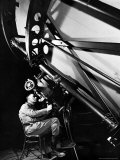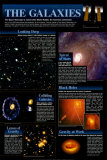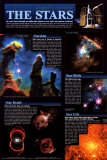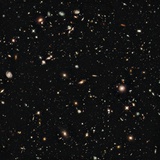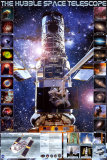|
Hubble Space Telescope (HST), orbiting around Earth since 1990, provides extemely sharp images of astronomical objects undistorted by Earth's atmosphere. Photographs taken by the Hubble Telescope include stars, planets, galaxies, nebulae, and deep field.
The Hubble Telescope is one of NASA's Four Great Observatories, an idea conceived by astronomer Lyman Spitzer. The Hubble telescope is named for Edwin P. Hubble, the astronomer who was the first to prove the universe is expanding.
The other telescopes are:
Compton Gamma Ray Observatory (CGRO) primarily observed gamma rays, launched in 1991 aboard Atlantis during STS-37 and was deorbited in 2000 after failure of a gyroscope [named for Arthur Holly Compton]
Chandra X-ray Observatory (CXO) primarily observes soft x-rays, launched in 1999 aboard Columbia during STS-93. [Subrahmanyan Chandrasekhar]
Spitzer Space Telescope (SST) observes the infrared spectrum. It was launched in 2003 aboard a Delta II rocket. [Lyman Spitzer]
Hubble is the only telescope designed to be serviced in space by astronauts. Between 1993 and 2002, four missions repaired, upgraded, and replaced systems on the telescope. After one final servicing mission, completed in 2009, the HST is expected to function until at least 2014.
The Next Generation Space Telescope (NGST), now named the James Webb Space Telescope (JWST), is tentatively expected to be launched in 2018.
|









